A cancer genius died from cancer. His startup is getting revenge
Two years after launching Earli, a stealthy startup based on his cancer-spotting tech, Sanjiv Gambhir died. His cofounders are carrying on his vision.

From his home in Portola Valley, California, Sanjiv Gambhir logged on to an important meeting for his startup one afternoon in April 2020. He kept the video camera off.
This was unusual, not least because he cherished face-to-face connections and was obsessed with visibility. A pioneer of molecular imaging and the director of Stanford’s Canary Center for Early Cancer Detection, Gambhir, known as Sam, had spent decades trying to make small, hidden tumors inside the body easier to see. Nearly 600,000 people in the U.S. die from cancer every year, mostly because we tend to catch tumors when they’re too late to effectively treat.
“Cancer doesn’t need to be a death sentence,” Gambhir would tell the researchers in his lab, as he reminded them of the actual patients they were trying to save. By the time he was 50, his breakthroughs in early detection—including developing the reporter genes used in positron emission tomography, or PET scans—had led to three startups, millions in seed funding, and 40 patents.
His latest startup, Earli, was the culmination of a decade’s-worth of research into whether you could force tumors to show themselves, by having them send out a signal that could be detected in blood tests or PET scans. If that worked, you could open up a new frontier in cancer detection. Gambhir had pioneered the technology, but cofounder Cyriac Roeding, an energetic e-commerce entrepreneur had convinced him to turn it into a company. By the start of 2020, they had already raised $19.5 million in venture funding to fuel the commercialization of their technology.
But in 2019, doctors had detected something inside Gambhir. A tumor of unknown origin was quietly spreading in his bones. The irony of cancer sneaking up on him was as brutal as the prognosis: After finding such metastasis, the median survival time is three to four months. But Gambhir turned his cancer and his experimental treatments—every few weeks in Munich—into a learning opportunity for himself and his colleagues. Now, a year after his diagnosis, he was bedridden and weak from the treatments. But he was determined to be on this call.
For three hours, Gambhir and the rest of the five-person board—including Jorge Conde, a biotech veteran and partner at the prominent venture capital firm Andreessen Horowitz—discussed manufacturing challenges, the search for more cash, and the results of a recent study the company had done in mice. “He was sharp as a tack. I mean, for God’s sake, the guy was still pulling apart the science,” says Earli cofounder and chief scientific officer David Suhy. “But you could hear in his voice, he was physically weak.”
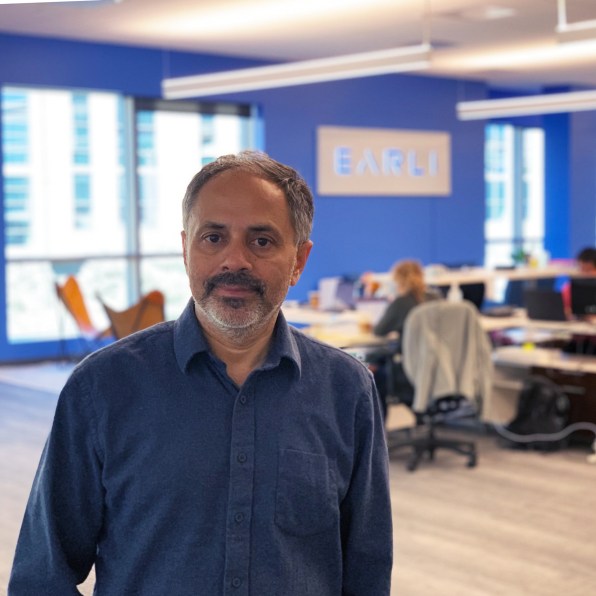
As Gambhir pursued this research, his wife, Aruna, battled back breast cancer—twice. Then, in 2013, biology reared its head in another, horrible way: Their 15-year-old son, Milan, was diagnosed with a rare form of the most aggressive kind of brain cancer, the very type of tumor Gambhir’s lab had been studying. Gambhir’s need to translate his work from lab to practice had never been more urgent. But Milan’s cancer proved quicker than the pace of medicine. He died in 2015, at the age of 16.
Five years later, as a tumor spread in his own body, Gambhir felt a different kind of urgency. “The problem is, he knew too much, even with Milan,” says Aruna. Now Gambhir’s ideas and multi-disciplinary insights into molecular imaging—his one-of-a-kind knowledge of the field—would need to go to the scientists and doctors who could make the most of it, even in his absence.
When President Nixon launched the war on cancer 50 years ago, Sidney Farber, the president of the American Cancer Society, declared that with enough resources, scientists could conquer cancer in seven years. Instead it has been a protracted war with a roving target. Despite hundreds of billions of dollars spent on research, cancer is now vying with heart disease to be the number one cause of death in the U.S. “Since 1970, there’s maybe 50% improvement in cancer survivors,” says Leland Hartwell, an advisor to Earli whose work on cell growth earned him a Nobel Prize in Biology. “Given all the effort, it’s not great.”
The hope now isn’t a cure, but finding the right combination of diagnostics and treatments to manage it. And after years of relatively miniscule government funding, detection is getting more attention. The race to catch cancer earlier has given rise to a $168 billion industry touting a new class of tests that promise to detect tiny signs of cancers in your blood or stool. Most are pursuing an approach known as “liquid biopsy,” using a blood test to look for abnormal pieces of DNA shed by cancer cells.
Finding bits of cancer cell sheddings, however, is notoriously hard. Earli’s approach compels tiny tumors to produce new signals, sending out flares—naturally-occurring proteins—that can be more easily detected in a blood test or illuminated for an imaging scan. A reliable diagnostic that could be administered once a year by a doctor to find and pinpoint very early, aggressive tumors in apparently healthy people could have a profound impact on healthcare and its costs.
“Once you find [a tumor] and you can localize it, you can act on it, and then it becomes protection, not just detection,” Roeding says. Someday, Earli’s “synthetic biopsy” platform could even be useful for targeting cancer cells with personalized medicine, immunotherapies, or mRNA vaccines. Already the company has shown an ability to detect certain cancers in mice and dogs; in June, it began dosing its first human patients as part of a clinical trial. But it still has a long way to go.
Back at the board meeting, Roeding reviewed the results of their first trial in mice. The synthetic biomarker they were using to tag tumor cells had shown up in PET scans of cancerous mice—a little glowing lighthouse in a sea of uncertainty. Suhy and Roeding were ecstatic. Gambhir was circumspect. “He asked us four questions,” Roeding recalls. Did the test actually detect cancer? Did it have a low false negative rate? Was it differentiating between malignant and benign? Could it determine the stage of cancer?
The trial was promising, but Gambhir needed more than promises. In June 2020, three months after the board meeting—and the day after receiving Stanford’s Dean’s Medal, its highest honor—he died at home at the age of 57.
For the field of early cancer detection, the loss was devastating. Tributes poured in from researchers around the world, and colleagues held a string of academic symposia dedicated to his legacy. Last September, the Journal of Nuclear Medicine bucked a 55-year tradition for the cover, trading its typical medical imagery for a full-page portrait of Gambhir.
His company, meanwhile, is forging ahead and confronting another big question: Can they manifest a technology without the visionary who dreamt it up? “We are working on a very low probability, but potentially high impact thing,” says Roeding. “It’s a moonshot. There’s no doubt about it.”
Light-haired and boyish, Roeding was born in Germany, and yet is the archetypical energetic Silicon Valley entrepreneur-investor. A veteran of business consulting, smartphone-era startups, and venture capital, he can repeat a well-rehearsed pitch verbatim and never sound scripted—skills that helped him build up the in-store discount app Shopkick and sell it for $250 million to the biggest telecom company in South Korea.
In 2016, a couple years after that deal, Roeding was in the Bay Area looking for his next startup idea. An interest in brain-computer interfaces brought him to Stanford’s campus, which in turn led him down the rabbit hole of precision medicine. But the deeper he got, the more confused he became. Here were all these scientists saying they each had the solution to the world’s various biggest problems. “I’m not a biologist,” says Roeding. “I didn’t know who was wrong.”
By Thanksgiving, three months into his search, Roeding was feeling deflated. That morning, his wife handed him a copy of Stanford’s alumni magazine and suggested he read the cover story, about a prominent radiologist’s struggle to save his son from metastatic brain cancer. The piece shook him, and early that afternoon he sent an email to its subject, Gambhir. “I can only imagine how hard especially holidays like today’s are for you and your wife,” Roeding wrote. “But perhaps just on a day like this, it is worth remembering that Milan, your journey to try to save him, and the powerful ideas that have come from this journey, have inspired others like me.” Roeding introduced himself, and said he, too, was interested in health monitoring. “Perhaps there are ways we could work together.”
Two months later, they met on a sun-drenched Saturday at a small restaurant in Portola Valley, a town near Palo Alto. They talked about innovation and science and the yawning chasm between academia and commercial medicine. After years of navigating the bureaucracies of biomedical research, Gambhir was drawn to Roeding’s left-field thinking. The lunch became the first of many Saturday meetings. Gambhir agreed to teach Roeding biology (“largely in vain,” says Roeding) and introduced him to even more scientists. But Roeding was more eager to hear what Gambhir was working on. When Gambhir told him about his lab’s work around using biomarkers to catch tumors earlier than other diagnostics, Roeding was hooked.
They used $400,000 of their own money to get started, incorporating the company in June 2018. They negotiated a licensing deal with Stanford for Gambhir’s related patents and tapped Suhy, who previously led gene therapies at Australian biopharma Benitec, to serve as chief scientific officer. Gambhir would be a scientific advisor and Roeding became CEO.
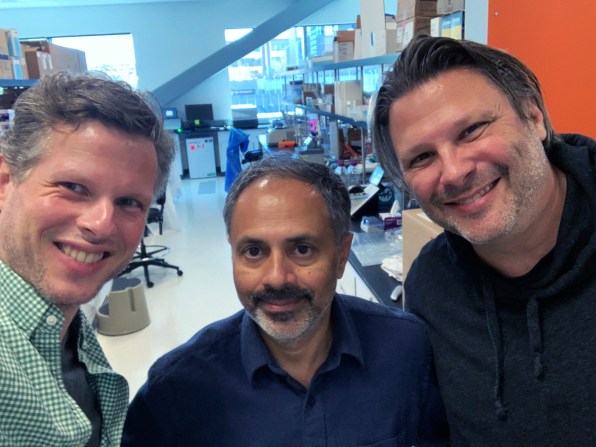
At the start, Roeding’s aggressive targets raised eyebrows among investors. “We said, we want to be in humans within three years, and they kind of chuckled,” says Roeding. Most weren’t convinced, but the pitch caught the attention of Andreessen Horowitz’s Conde, who is a biotech industry veteran. Before the year was out, Gambhir and Roeding had secured just shy of $19.5 million in seed funding from a group led by Andreessen Horowitz that included Salesforce founder Marc Benioff, Menlo Ventures, and Chinese venture firm ZhenFund.
Even with buy-in from the likes of Andreessen and Benioff, the founders knew their operation faced an uphill battle. Diagnostics that require injecting patients face a phalanx of clinical trials, a process that takes years even with the enormous resources of giant pharmaceutical companies. While Earli had shown some promise in the lab, there wasn’t a guarantee it would translate to animals. And scientists had never tested synthetic biomarkers in humans: There were likely to be unusual regulatory hurdles to getting a clinical trial approved.
For the first year, Suhy and Roeding met with Gambhir every four to six weeks to talk about the company’s progress. They managed day-to-day operations, but Gambhir could find the holes in their thinking and minor successes—an invaluable perspective in setting the direction until their next meeting. As the hours wore on, their conversations would inevitably give way to heady discussions on the state of science.
In late spring of 2019, Roeding got a call from Gambhir. His voice sounded funny. He told Roeding that he was sitting on the couch with his wife. They had just found out that he had cancer, and it wasn’t clear where it had started. By definition, it was metastatic and almost impossible to treat. If they didn’t know where it originated, they couldn’t know what they were fighting.
Roeding tried to stay optimistic. “It’s battle time,” he told his cofounder. Gambhir said there were possible treatments, but he was also clear-eyed. They agreed that they needed to prepare the company for a world without Gambhir.
“We have to make sure that our science is advanced enough so that we can move forward without having to rely on his input at a deep level continuously,” Roeding recalls realizing. “For us, really the main question became, does Earli have enough escape velocity so that we can become what [Gambhir] wants us to be?”
The biggest victories in the war on cancer have been scored via anti-smoking campaigns and cigarette taxation. They’re largely responsible for the 27% drop in deaths from cancer in the U.S. between 2009 and 2019, according to the Center for Disease Control and Prevention (in lung cancer, advances in targeted therapies also played a role). Still, little has progressed in screening, which scientists see as the best opportunity to find cancer before it gets out of control.
Chances are, you’ve been through multiple cancer screenings: mammograms, pap smears, colonoscopies, when a doctor takes a look at the weird mole on your back. Long-time smokers over 50 years old might get a CT scan. For certain cancer types, these screens, which mostly rely on seeing physical changes, can save lives.
But there are lots of forms of cancers that can’t be screened for: ones that are too small to see or that haven’t necessarily caused any bodily changes. Tumors mutate and evolve in unique ways, so each person’s cancer is a little different. A tumor that’s benign in one body could be deadly in another. “What we’re faced with is just enormous diversity,” says Earli advisor Hartwell.
As a result, cancer treatment has become more personalized, with scientists tailoring dosage and type of therapeutic to the genetic makeup of a cancer’s cells. But some scientists, including Hartwell, think that developing better earlier detection methods will offer a far less invasive—and far more affordable—path to lowering cancer deaths. So far, however, early detection has proceeded in fits and starts. “The cost per advance is not impressive,” he says.
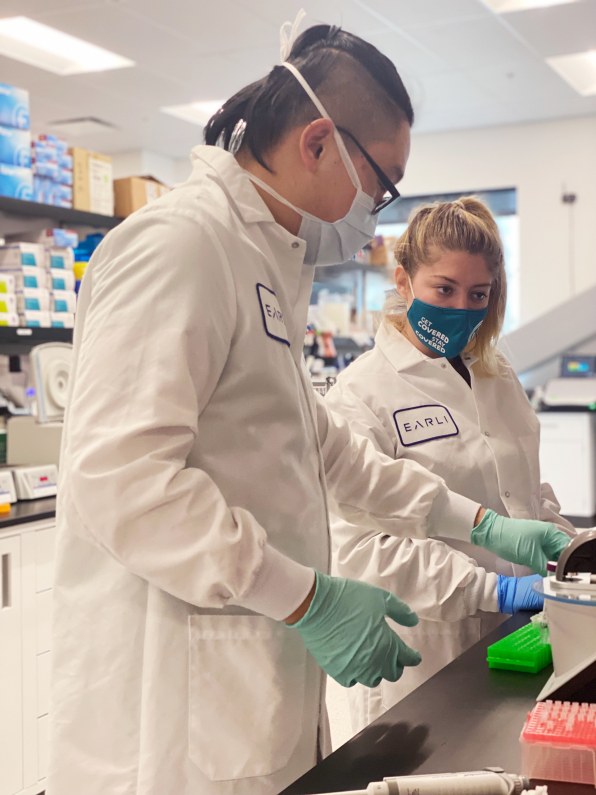
Menlo Park-based Grail—one of dozens of companies that Gambhir advised—now sells a liquid biopsy test called Galleri, which purports to find 50 types of cancers in apparently healthy people. The test, at $950, is not covered by insurance, but that could change after full FDA approval, which Grail intends to seek in 2023. Another California company, Redwood-based Guardant Health, is currently running trials of its early-stage colorectal cancer test, eyeing a market for early detection that’s expected to reach $280 billion by 2027.
Not everyone is so bullish on liquid biopsies, however. “I should be careful what I say. I could make myself persona non grata,” says Judy Garber, Director of the Center for Cancer Genetics and Prevention at Dana-Farber Cancer Institute and board member to Earli. Several liquid biopsy companies, she says, “want to find all cancer at once, which I agree would be great. But I think that hasn’t been what the data supports, and yet they seem to be in this huge rush to sell their test.”
The most compelling recent data showed that Grail’s test could positively identify stage I to III cancer more than 67% of the time in a set of twelve cancers including head and neck, liver, and pancreatic cases. Overall, the test had a false positive rate of 0.5%, and was able to identify the tumors’ organ sites 88.7% of the time. But its ability to detect other cancers was lower: It identified less than 20% of thyroid, kidney, and prostate cancer cases, for instance.
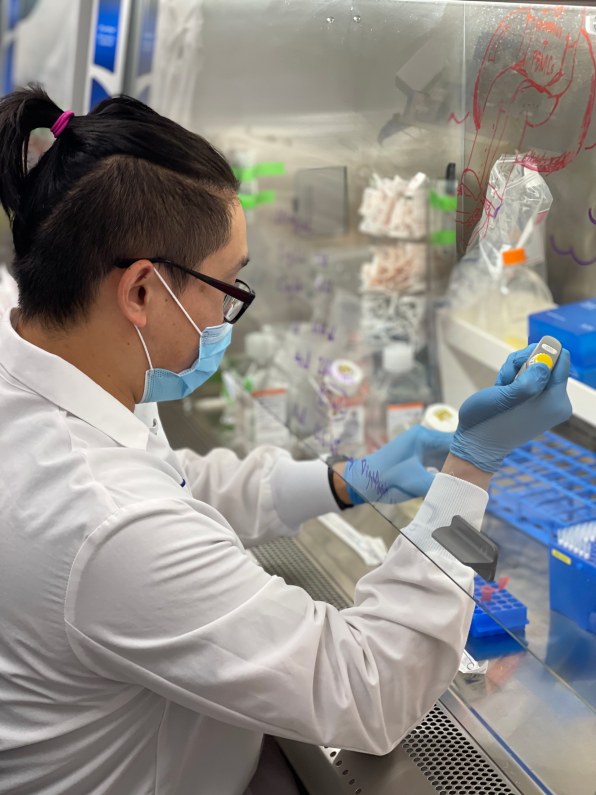
Earli’s diagnostic takes a more proactive approach to the search for tumors. The platform consists of an injectible compound that carries a reporter gene, engineered to activate at the faintest hints of tumor cells, wherever they are. Once it’s tapped into the cellular pathways driving the tumor’s uncontrolled growth, the gene is designed to express a synthetic biomarker, effectively “boosting” the cancer’s signal. For its biomarker, Earli chose an enzyme that typically only appears during embryonic development. (A Cambridge-based startup called Glympse is developing synthetic biomarkers to identify liver disease, though cancer detection is also on its roadmap.)
The approach has several apparent advantages over current liquid biopsy technologies. Because it uses a synthetic biomarker, Earli can more easily control the amplitude of the signal. Where liquid biopsy companies use the genetic code of cancer fragments to try to determine a tumor’s location in the body, Earli pinpoints the tumor itself. This could also help physicians better track the success of ongoing therapies, and lead to novel therapies: With an additional molecule designed to trigger an immune response in cancer cells, Earli’s surveillance platform could eventually be harnessed to kill elusive tumors too.
Hartwell remembers hearing Earli’s concept for the first time, and being struck by it as “incredibly brilliant.” “You sort of wonder why it took us so long to think of it,” he says. “But that’s not what makes a successful company.” If Earli is going to be “a company rather than just a research project,” he stresses, it needs to quickly identify—and market—an application of its technology. “That’s a race that you can’t predict.”
When Gambhir died, the company was still in semi-stealth. Earli barely had a web presence, save for a recruiting website, and had interesting, but nascent progress in mice. It needed more cash, to hire more scientists, double down on pre-clinical research, and start building out a new lab.
Before Gambhir’s last board meeting, the company began getting feedback from his longtime colleagues and friends, a Who’s Who of cancer pioneers: Hartwell and Garber, but also Nobel Prize-winning cancer researcher Jim Allison, Moderna founder Bob Langer, Charlie Rudin, who heads up thoracic oncology at Memorial Sloan Kettering, and Aruna, who now runs another company related to her husband’s research called CellSight, which is working on technology that recognizes if cancer treatment is working.
In fall 2019, Langer dashed off an email to investor Vinod Khosla, founder of Khosla Ventures, introducing him to Earli and laying out how it differed from liquid biopsy firms. Khosla had for years passed on high-flying biotech investments, but says he was drawn to Earli’s “orthogonal approach” to early detection, versus the “incremental” efforts of other ventures. Khosla likens Earli to Cambridge-based Commonwealth Fusion Systems, one of his biggest investments, which is aiming for the moonshot of nuclear fusion. “In our fund, we sort of say, ‘large impact, large technology breakthroughs that cause a large impact’—if you do that, the money will follow.”
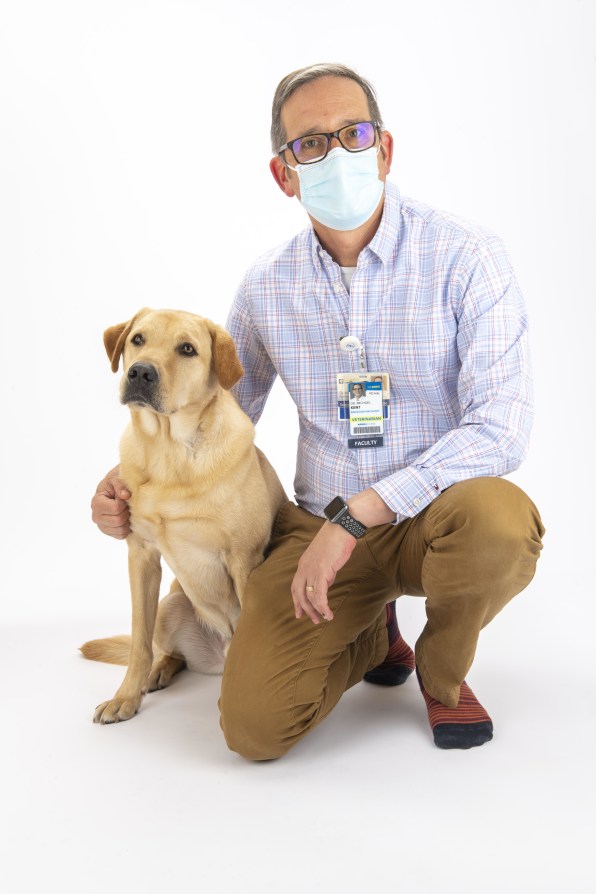
“It’ll never be quite as good as if Sam was working on it himself,” Khosla admits, “but they’re at a proof point that is substantially lower risk today than it was two years ago.” He pointed to “a cadre of world-class scientists” that Earli has recruited as advisers. “If it can be done, I think this team can do it.”
With the funds, Earli went on a hiring spree: 29 researchers now work at its headquarters in South San Francisco. And Roeding and Suhy decided to pursue a proof of concept in dogs. The company worked with the Comparative Cancer Center at the University of California Davis School of Veterinary Medicine, which connects sick dogs with clinical trials. Together they studied the biomarker at four different doses in a total of 23 dogs to see if it would show up in blood work.
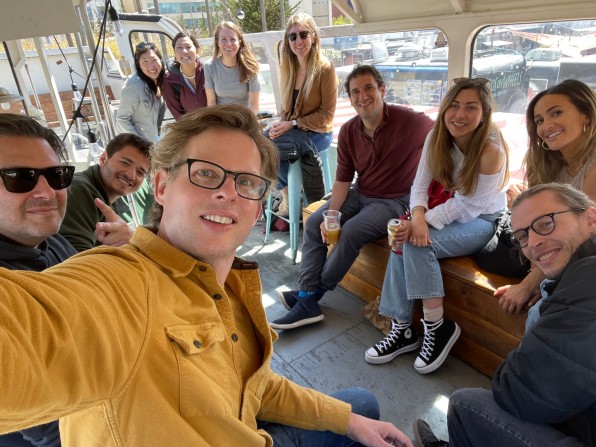
Demonstrating that the test was nontoxic for dogs was crucial in getting the Australian government to agree to let Earli begin its first human trials in the country, which began this past September. So far, two people have been dosed, and another is on track. The aim is to detect advanced-stage lung cancer in already diagnosed patients—and to amass the data Earli will need to convince the U.S. Food and Drug Administration to let it proceed with a U.S. trial of its novel technology.
Suhy says he’s encouraged by the speed with which the FDA approved mRNA vaccines during the pandemic. That suggests regulators are amenable to novel medical technology like Earli’s diagnostic. Still, he notes, those approvals were based on years of data. And even if Earli achieves FDA approval, it will need to convince doctors to add a novel diagnostic to their workflow.
Nora Pashayan, a professor of Applied Cancer Research at University College London who is not affiliated with Earli, calls its concept “amazing.” But says “it could take a long time” for Earli to come to market. And its approach faces several pressing questions, she says, related to the design of the biomarker, how often it’s deployed, and in whom.
These elements—how and who—matter, because contrary to conventional medical wisdom, early detection doesn’t always save lives. The problem is that doctors can’t always tell the difference between a benign or malignant tumor and therefore may treat a tumor out of an abundance of caution. “Other than the psychological burden [of diagnosis], there are side effects of treatment—going into chemotherapy, endotherapy, or surgery,” says Pashayan. “So the harms are much more than the benefits, [if] this cancer was not going to do anything.”
A failed public health effort in South Korea serves as a cautionary tale. Between 2000 and 2011, thanks to a government recommendation, doctors in the country started screening everyone for thyroid cancer. Unsurprisingly there was a surge in thyroid cancer diagnoses and surgery to remove these tumors. However, after ten years, deaths from thyroid cancer remained stable. The screening campaign wasn’t preventing death. If anything, it was creating problems for people who were experiencing complications from unnecessary surgery. For companies like Earli, the protocols around a diagnostic matter as much as whether it works.
The greater scientific research community still believes that early detection tools, like Earli’s, are critical. Cancer drugs treat, but do not cure—and are immensely expensive. The hope is that finding cancer early, identifying the tumor profile, and stopping it before it spreads could one day make getting cancer a relatively anxiety-free experience. “What we need to show are the success cases of what it means to find it, get rid of it, and live on,” says Roeding. “And in order to do that, we need to find more early stage cancers.”
More than 1,600 people logged into Gambhir’s memorial service, which was held at the height of the pandemic, in July 2020. Colleagues described his generosity and far-sightedness. “It would not be entirely accurate to say that Sam presented a ‘vision’ for the field of molecular imaging, because that sounds a little like the elements of the vision were out there and others were also aware of it,” said Norbert Pelc, Stanford University professor emeritus of radiology. “Sam created the vision and then articulated it. He was able to do that: See a path ahead many years ahead of his time and explain it to an audience at a wide range of levels.”
“He gave you confidence in that future,” says Christina
Zavaleta, an assistant professor of biomedical engineering at USC and
one of Gambhir’s hundreds of former students. Sam may not get to see
where all of his ideas will travel, but “he was already there in his
mind,” she says. “We’re the ones that have to catch up.”
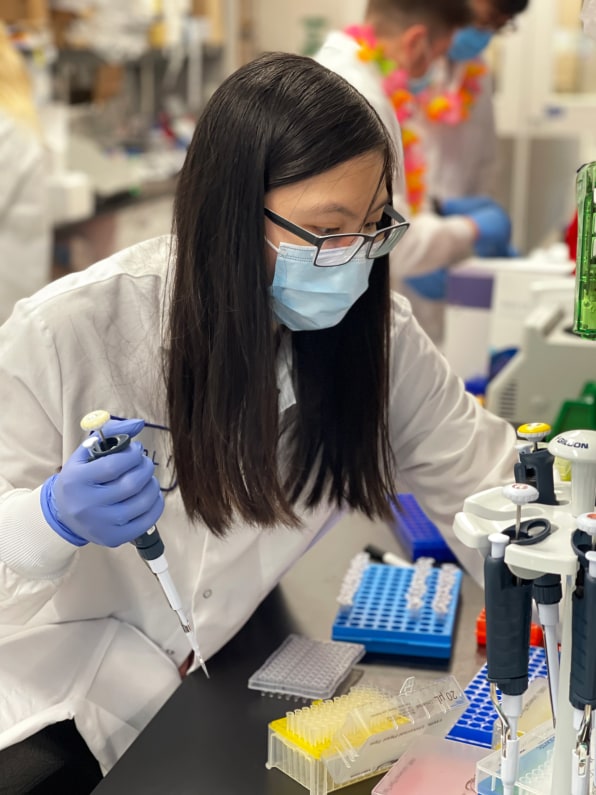 [Photo: courtesy of Earli]
[Photo: courtesy of Earli]
“It’s a cruel irony that Sam’s own cancer was only detected after it had spread to his bones,” Aruna, Sam’s wife, said at his memorial, her voice breaking. “Perhaps if some of the tools in precision health were in place, he would have had a chance to live and contribute even more. He told me towards the end days that he felt he had another decade of productive work left in him. Imagine what that could have meant for humanity.”
No comments:
Post a Comment